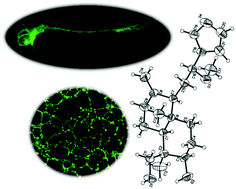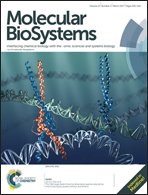An andrographolide derivative AGP-26b exhibiting anti-angiogenic activity in HUVECs and zebrafish via blocking the VEGFA/VEGFR2 signaling pathway†
Abstract
The aim of this study is to investigate the anti-angiogenic properties of andrographolide derivatives AGP-26a (12β-isomer), AGP-26b (12α-isomer) and AGP-26 (4 : 1 mixture of AGP-26a and AGP-26b) in vitro and in vivo. Human umbilical vein endothelial cells (HUVECs) and the Tg(fli-1a:EGFP)y1 zebrafish model were used to identify the anti-angiogenic activities of AGP-26, AGP-26a, and AGP-26b. The results showed that AGP-26b exhibits the strongest inhibitory effect on VEGF-induced proliferation, migration, invasion and formation of capillary-like structures in HUVECs. In the zebrafish model, AGP-26b also showed the strongest suppression of ISV development. Further studies showed that the underlying mechanism of the anti-angiogenic effects of AGP-26b was at least partly through the blockage of the VEGF/VEGFR2 signaling pathways. AGP-26b blocked the activation of VEGFR2. Consequently, the phosphorylation of key intracellular proangiogenic kinases such as Src family kinase (Src), focal adhesion kinase (Fak), mitogen-activated protein kinase (MEK), extracellular signal-regulated kinase 1 and 2 (Erk1/2) and Akt induced by VEGF was suppressed by treatment with AGP-26b. Moreover, AGP-26b reduced the protein expression of matrix metalloproteinases (MMP-9 but not MMP-2) in HUVECs. These results provide evidence supporting the notion that AGP-26b may serve as a potential therapeutic anti-angiogenic agent.



 Please wait while we load your content...
Please wait while we load your content...